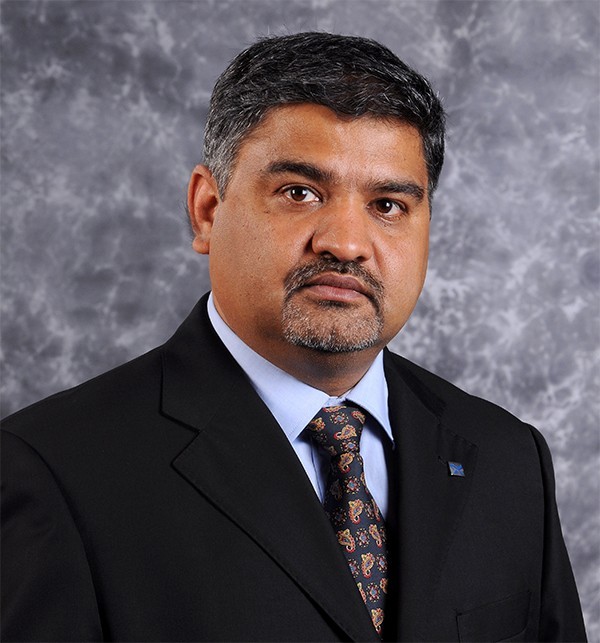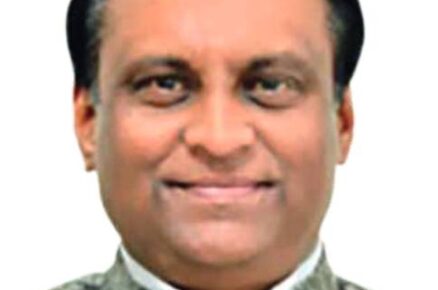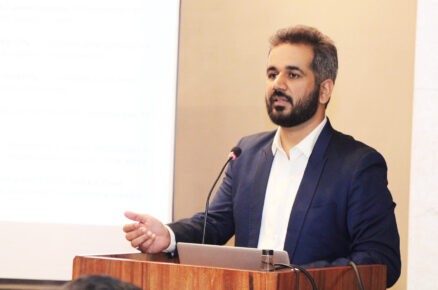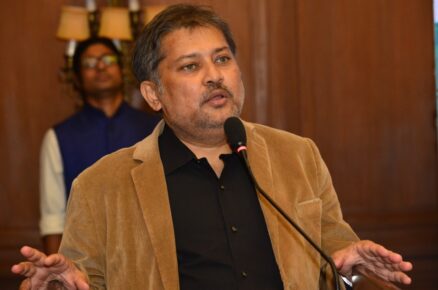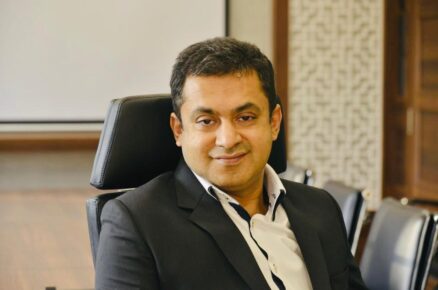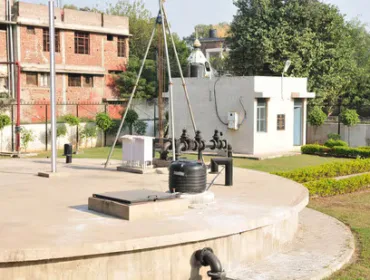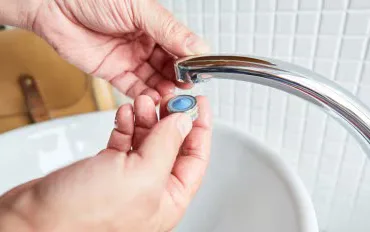Mr. Sanjeev Sirsi,
Associate Vice President- Water Utility
Grundfos India
Although digitalisation of water is a work under progress, technological interventions and their ground-level implementation have larger gaps to overcome. Identification of the extent of water consumption and potential sites for leakages will play an important role in devising a holistic approach for all future endeavours.
Water Digest (WD): How far has India reached in Water Digitalisation?
Sanjeev Sirsi (SS): In the bigger picture, Digitalization of the water sector is an ongoing phenomenon, but defining technological interventions and their ground-level implementation have larger gaps to overcome. If one were to take a practical approach, it is truly fascinating to discover the extent of water consumption and identify the potential sites for leakages. However, to implement such interventions on a larger scale, political support is indispensable. There is an urgent need for a holistic plan.
Like smart pumping systems, the metering of water is a prevalent issue in urban settlements. This increases problems like rising Non-Revenue water [NRW] and losses with the distribution systems. NRW is a defining parameter for the sustainability of a water distribution system. It is the percentage amount of water for revenue that is not generated, and greater values of this show higher threats of thefts and the need for water audits. NRW values reach 40% in major cities like Bangalore, as the source is at a larger distance and the distribution system is complex. In such cases, it is difficult for people to keep a check on the values. There has to be a more convenient platform available to know the daily basis and consumption pattern of water. For example, the Arogya Setu app provides us with changing data for covid infected people around us to make people more aware. The same can be framed for Smart Water Management. This will not only improve the efficiency of the performance but also make people more conscious about their water distribution system. In short, if we want to take this on a larger scale, we have to adopt a more integrated approach.
WD: The digitalization of water is fast evolving into an indispensable resource. What will be its major impact on the water utilities in India?
SS: Basically, the concept behind Smart City is based upon the accountability for our resource consumption, which is related to the supply and demand of the water being distributed across the city. For example, we defined the ultimate goal at the Chennai Metropolitan Smart City ADA base development located in T Nagar, incorporating the number of water leakages, and how to reduce it and enable the inhabitants of the ABD area to map their subsidies. We proposed a 24*7 supply system to improve overall efficiencies, and hope that this will increase the pumping hours while also helping in the detection of potential leakage sites. The DPR was prepared as per this proposal and consisted of all major aspects. This part of smart metering ensures that people are well aware of their water consumption and take action accordingly.
WD: Has Grundfos implemented any such project anywhere in India?
SS: Currently no such strong interventions have taken place in the water sector, but a lot of interesting projects are taking place in Urban Flood modeling. Cities like Mumbai go through such a phenomenon every Monsoon season, and high tides make the complete drainage system dysfunctional. With the help of SCADA software, we developed and planned a pumping system with a capacity of 48,000 liters per second. This project then was handed over. Including SCADA system automation, the excess amount of water can be known easily and be pumped into the sea.
With the success of this project, it gave authority to the local bodies to take over the decision making, hence improving the governance. Through the SCADA system, the accountability of data became even more feasible and accessible. The data could be generated and analysed from any part of the world.
WD: As you said that you know there are way, way fewer projects, such projects, So the players are also very limited players who are working in this domain?
SS: Few companies have the competency to provide a specific type of purpose. Companies like ABB, Schneider, and Seimens are there in the market, but their major work is limited to analysis and data interpretation of the water flow. To change the narrative, Seimens have come forward to work together extensively on water digitization, smart pumping technologies.
WD: How important is it for any country to have a digital water sector to accelerate development? Can you give examples of countries where it has been successful?
SS: Yes, we have a typical system called the Demand Driven Distribution which tells you about the demand, depending upon which the pumps start functioning and
providing water to the whole area. We have set up these demand-driven systems in Denmark, our home base. We have done it in Poland, Chile and 60 other countries where we have established this specific system called a demand dividend distribution. You may ask what happens in this distribution today? How do you get water from a treatment plant? The water is pumped to either of the two overhead tanks and from one overhead tank, it comes to your individual houses or the underground tanks of a building or society. However, this is only possible when there is an overhead tower in the area. However, if the land itself is higher or you have undulating land due to the expansion of cities, there are certain places where the water which has been pushed from the treatment plant does not extend beyond 15 kilometres. Thus, the municipalities create intermediary pumping stations. So basically, the water from the treatment plant gets into storage in an area Y, and a separate pump then sends it to the whole area say in a pressurized manner or over a tank. Now, if you look over a tank, it is an obsolete kind of solution because the maintenance of the overhead tanks is not generally satisfying. This causes a host of bacteria to grow in the dirty water in the overhead tanks. Now from the overhead tank, it goes into your complete area feeding water. The cost of the overhead tank and maintenance of the water tank is actually very high. So what we have done is we have created a ring main system, wherein the water is taken from the tank and then pushed into a pressurized system across the stream. This leads to the immediate detection of leakages by workers present around. It keeps a database of how it is running every day and keeps on improving on the algorithms to make the scheme more efficient. The recognition of leakages in the system is determined by the pump which detects it at 10 am sharp.
Two pumps are supposed to operate at 40% of the speed. At 10, if the two pumps are running at 40% of their speed and one starts working at 60%, it means that there is an excess requirement of water being generated in a certain area. Probably due to a festival or something, excess water starts getting consumed, but we have a siren that has an alarm if it goes over 40% of the normal consumption, then it alerts multiple people saying that “Listen, I am not supposed to work like this at this time. Could you just check it the leak in one of the areas?”. So, this kind of system immediately tells you, puts multiple guys into action. So basically what the pump system does is that it provides water to everybody at a particular pressure, which is preset. Secondly, it immediately rings an alarm if the system is not working as per how it is supposed to when it was designed. Finally, it also eliminates the need for an overhead tank.
While on a project in Andhra Pradesh, we were working with a consultant who had designed a system with 75 overhead tanks, but the maintenance and cost of these 75 overhead tanks were too huge. We went there and sat with them to explain the system, and they completely changed the system by keeping only five overhead tanks in some remote areas. The other 70 overhead tanks removed from the system after implementing our design, and the whole design into the DPR demonstrates that this would save money. This would let you know how much water is being consumed or if the non- revenue water rates keep increasing. Moreover, you will have efficient water management at your disposal. So, these are certain things that have been in the system and have been in use outside India. But in India, it is taking a little more time than what we expected to get to the on-ground solutions.
WD: What do you think will be the big digital water trends in the next decade in India?
SS: Implementation of water meters would be a major step because as you pay water annually or say monthly on a certain consumption or a certain pattern, it is difficult to actually plug on the cost of the water, which has been pumped, like for example when you’re talking about Bangalore itself and I’m pumping water from TKLD which is 45 kilometres from here, there are huge pumps with humongous amount of energy consumption involved. Thus, the real cost of water is not known. The moment the real cost of water is known to the end-user, then the consumption will automatically go down along with the wastage. Municipalities that are currently bleeding will realize that the actual amount which is spent on treatment and sending the water to the individual customer, so I think the acceptance of water meters is something which is of prime importance. Once that happens, everything else falls into place. Generating awareness amongst individual citizens to pay for the right amount of water can be achieved by positioning water meters. Automatically, there will be funds in the municipal department that can then actually rehash the complete system altogether.
WD: What are the main barriers, which you see for adopting digital technology in the water and wastewater sector, and how can we overcome them?
SS: If we think of the situation the prevailed say around 10 years ago, paying for the road seemed to be unreasonable. People are now aware of the involved funds to enhance the quality of the service. The same is in the case of water. If we make people realize how using recycled wastewater for secondary purposes will reduce the overall economic instability, then it will be more convincing for people to adopt such methods. It will also reduce the load from primary water resources and create a more balanced consumption pattern.
WD: Any message for the readers of Water Digest?
SS: Cultivating good habits of efficient water management can lead to big wins for us in the future. These habits begin at home. I think that is the major point that we need to get across to the municipalities.





